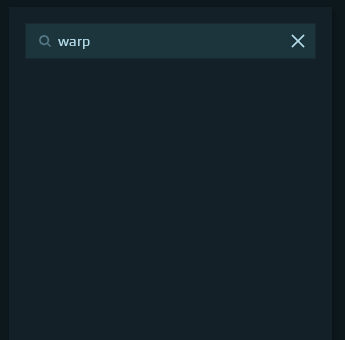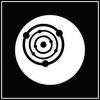Search the Community
Showing results for tags 'Tool'.
-
Hello fellow noveans! Today I bring to you the latest of my creations, which is made to work along with NQ's official Mesh Exporter, the Mesh Transformer! The Mesh Transformer is an unofficial tool meant for improving how the exported glTF files look like and also making them easier to work with in 3D apps like Blender. It works by reading the exported files, adjusting materials so they match what they would look like in-game, generating UVs and also isolating elements from honeycomb materials. You can also use it to later customize how your ships look like inside 3D apps, such as changing material colors, etc. Some features you will find using it: Cross-platform, as long you have a copy of the game directory; Supports simple usage as a CLI utility or advanced/integration use as a Node.js library; Able to restore materials close to what they look in-game, mainly colors and textures; Able to separate voxels/honeycomb from elements, allowing those to have different materials; Imports/exports as glTF, which can be used in a variety of software; NOTE: One requirement for using it is having the game installed, as it reads material data from the game's directory when applying the fixes, as it feels obviously wrong to share game assets in my own project. For games installed in different locations, it also provides a way to set this. You can find the whole source-code plus instructions on how to install and use on GitHub, the only requirement other than having the game installed is having Node.js: https://github.com/wolfe-labs/DU-Mesh-Transformer Here's an introductory video showing it in action:
-
Hello there, Noveans! Today I'd like to present you with two online tools (possibly more coming soon) I've been recently working on, that aim to make the Dual Universe life easier! Item Database Explorer Link: https://dual.wolfe.science/tools/item-database-explorer An online database containing useful information related to DU items and their recipes. It has a search bar where you can search for any item or resource, and by selecting one from the list you can see the following set of information: Basic data such as ID, category, tier, volume, mass and density; All available crafting recipes for that item, including when it is a by-product of something else; All recipes that use that item as an ingredient; All honeycomb types that can be produced using it; All resources, parts and items where that resource is required as part of the chain (except when it's part of a Catalyst); As a starting example, you can check out Pure Iron and see how many parts and items use it There's also a new section in the works that will list all planets, moons and moonlets where a certain resource can be found, but it's still a WIP, due to some divergence I found when comparing in-game ore lists with the Atlas file. Celestial Body Calculator Link: https://dual.wolfe.science/tools/calculators This one is more like a general-purpose visualization of the Atlas, but also supports few calculations on things based on altitude. At the moment it offers: Gravity information, including the altitude where gravity is 0.01g; Atmosphere information, including the altitude where atmosphere density is 10%; Surface minimum, average and maximum altitudes; Construct build limit altitude; Total surface area and number of territories; Calculation of gravity, atmospheric density and total circumference length at desired altitude; I hope that information is somehow helpful for the community and I'm completely open to suggestions on what could be improved or added!
-
I posted up a small example for my Modula scripting framework. It's still early days, but hopefully it will be of interest to someone, somewhere (possibly in a galaxy far, far away...).
-
Hello, noveans! õ/ Today I bring you a project I've been working on for a while now, that intends on making Lua development quicker and more organized! About: This tool was initially built as a wrapper around hdparm's excellent wrap.lua script, which among many things allowed developing scripts outside DU, automating the creation of JSON config files, making events easier to work with, etc, and eventually evolved into a tool on its own. Basically, the CLI is a small command-line that allows you to create Lua projects from all sizes and shapes, be it a simple greeting script up or a multi-project system. Main Features: - Support for Lua scrpts with code distributed over multiple files, accessible via require statements, also supports multiple entry-points per project (multiple PBs or render scripts) - Support for importing of external packages via the CLI or from LUA_PATH - Support for render scripts - Support for minification and (experimental) compression - Support for code completion (intellisense) on Visual Studio Code and IntelliJ Idea, requires EmmyLua installed in both cases - Element link management built-in, allows you to indicate what each of the linked elements should be named as and its type - Autoconfig export in JSON, YAML and CONF formats - Syntax checks at compilation time - Optional helpers for linked element management, etc Website / Documentation / Source-code: https://github.com/wolfe-labs/du-luac Requisites and Installation: - You will need to have the Node.js runtime installed! Version 16 LTS is recommended. - For some functions to work, it's ideal to have Git installed too. Lua is optional. - Install via the command: npm i -g @wolfe-labs/du-luac - After installing, you should be able to run the CLI via the command: du-lua
-
In this post I'm going to list (in some detail) what I think should be top priority for an update that focuses on a few pillars: intuitiveness and documentation. In these two pillars, this game can make a lot more sense to newer players (thus keeping more on board), while also helping the pre-existing community from becoming discouraged. Other things you must assume, as is for most games. This game should not require 3rd party tools to play, as MOST players do not use any outside tools to play games. Even if this changes in the future, it is still a good idea to take things from the ground up, assuming they do not understand how to play this game. Starting with actual Quality of Life features: Complete overhaul of Maneuver tool to indicate with proper HUD a. Create durability for the Maneuver tool. This durability amount directly correlates with the amount of meters a player can move ANY (dynamic) construct. This is not tied to the construct, but the item itself. b. Increase range capacity from 50, to 150 meters. This is because of making it a unified meter for all ships, while also adding a bit of QoL by allowing players to move their constructs a bit further. c. This durability would recharge at 2m/s* while the durability is not gone, while if it is gone, it recharges at 5m/s*. While the bar is recharging from empty, the tool is not usable until durability is FULL. *Since we're measuring the durability in meters allowed to move distance, using m/s indicates the rate of which durability is recharging per second d. Add a status bar tied to the durability, of which would function similarly to most durability bars (see Minecraft). This would be a visual indicator on the tool itself, like the image given below, which allows the player to understand how these mechanics work in an intuitive way. Allow cores to be swapped out for larger ones Similar to how Mindustry does cores (see gif), allow players to replace the current core on a ship with a larger one (not vice versa). If there is ANY other element in the way of the core, then it would collide, and not be allowed. In addition, the core must entirely envelop the previous core in order to replace it (like Mindustry). Lastly, the previous core is destroyed upon replacement, and all data tied to the previous core is transferred into the new one. Better Item/element descriptions a. This one is purely documentation, but a static table with groups you can choose from a dropdown menu next to it would be much more intuitive and better working than a scroll bar. Examples of groups of these would be "resistances", "basic info" (HP, tier, mass, unit volume), "unit specific info" (fuel consumption, thrust output, just related info for that specific part). I'm sure a dev team could make better groups than I can, but that is the idea. b. Review EACH and EVERY item description, and make sure that it is neither generic, nor is completely forgotten about. For example, there are a LOT of items that just don't have descriptions, or have copy pasted descriptions that don't really tell the player much. This is not a chair? At least it doesn't have a lot of generic text... So a bunch of generic text, with a generic description afterward. What does this element do again? For a lot of functional elements, the game nails the proper description. However, I don't see a reason to have a copy pasted description on EACH tier of EACH engine, because if a player is buying a higher tier engine (than basic), it's quite clear they understand how engines work, because they've played the game enough. In addition, reminding a player each time they look at a decorative element "they do nothing but make your construct look cool, but they do add mass", instead say "this is a decorative element", or something similar, of which shortens descriptions, and makes them more rich in content. In addition, less need for that annoying scroll bar... Increase documentation in, and OUTSIDE the game a. The codex's information, while sorta useful early game, is extremely outdated. There hasn't been a single time in my entire DU playthrough where I've looked in the codex, and genuinely found something that is new, and USEFUL. The sort of things needed to be documented inside the codex are things such as tutorials, how an element works, such as how to use Anti-grav, or warp drives! Uhh... so how does one use this? How do I control the AG unit? ...hello? b. Increase external documentation on the DU wiki. Even if it's community run and made, encouraging, and/or working on the wiki is a MUST. Perhaps encourage users in some way to update the forum. Anything to get proper documentation. In addition, tying in the wiki with the codex (as in, it's edited on the wiki, then the codex syncs to it) would be very beneficial by having both be updated *dynamically*, cutting the work in half. To be the face of knowledge for this game, it seems quite old. As the background suggests, this seems sunsetted. Developers dedicated to fixing smaller issues This isn't really a list, but as a lot of games have, having DEDICATED developers that play the game and from there fix these minor issues and gameplay elements is a good idea. This would be beneficial because you'd only need 1-3 devs total to work on something like this, and they'd be able to do things such as these QoL changes in game, and fixing these minor bugs or inconveniences. In addition, having devs that do this will also increase involvement with the community. This is because these minor changes makes a big difference when playing the game for a long time. In addition, being able to fix minor issues on-the-go means that they won't build up, and instead will be maintained much more efficiency, due to being at a ground level. I hope you guys enjoyed my post, I plan to update it with more ideas in the future as time goes by.
- 4 replies
-
- cores
- developers
- (and 4 more)
-
Speaking very little English, I use google translation and leave a copy in French. Hello everyone. so, let's talk about Voxel tools that could have more potential. 1- Have with a touch the possibility of using the smoother smooth tool. 2- it would take a selection tool to be able to take several Voxels and be able to pass the smooth tool. 3- To be able to inlay one or more voxels modified in other voxels with the option "to take against or not the empty voxels" it would already be a great + to be able to create more finesse and detail our creations. I have already played a lot with voxel on the game Everquest Landmark and to better understand I put the link of my channel youtube or I kept 25 videos tutorial on the Voxel. Link of my first video on "the bars and points in micro voxel" which illustrates the why of points 1 and 2. https://www.youtube.com/watch?v=-6gB1qHInDI You who is a builder, do you follow me? Bonjour à tous. alors, parlons des outils Voxel qui pourrait avoir plus de potentiel. 1- Avoir avec une touche la possibilité d’utiliser l’outil lisse plus doux. 2- il faudrait un outil de sélection pour pouvoir prendre plusieurs Voxels et pouvoir passer l’outil lisse. 3- Pouvoir incruster un ou plusieurs voxels modifié dans d’autre voxels avec l’option “prendre en contre ou pas les voxels vide” ce serait déjà un grand + pour pouvoir crée plus en finesse et en détail nos créations. j’ai déjà joué beaucoup avec le voxel sur le jeu Everquest Landmark et pour mieux comprendre je met le lien de ma chaine youtube ou j’ai conservé 25 vidéos tutorial sur le Voxel. Lien de ma première vidéo sur “les barres et pointes en micro voxel” qui illustre bien le pourquoi du point 1 et 2. Toi qui est constructeur, tu me suit?
-
One feature I would like to have when building is a hollow tool. The program I have been using to design concepts for my ship has this and I have found it very useful. Basically, it removes all voxels from the interior of a shape, leaving the outside surface as an empty shell. It does this even with complex shapes created by adding and subtracting simpler ones together. This would be very useful in Dual Universe, since eliminating any unnecessary voxels would reduce the resource need to build a construct.
-
I would like to introduce an idea about using the paint tool to create some bump maps textures for our builds: The concept is using the paint tool and having the possibility to switch to texture or bump mod. Normal maps would be too complex to paint by ourselves, so preferably using bump maps system, painting in shades of greys over our texture painted model. An Invisible painted information layer to anyone's eyes on a finished build but renderable by client side lights information calculation. This might greatly improve the appearance of any constructions And why not doing the same for a reflection map painting mod
-
Hi everyone, Just a few ideas about the nanoformer tool in particular. I figured that this topic would make much more sense in the Builder's Corner than in the Idea Box, as it is specific to the game's building tool. This post is also partly in reaction of the devlogs I've read about it. Its lore, the way it works, etc. So, in short, the nanoformer tool is able to deconstruct, store and reconstruct matter in the desired shape, at will. A few ideas has been thrown on how it could be powered (solar, bio-heating, etc), how it would be explained, etc. Nothing is set in stone of course, but it is not really satisfying either. So, I came to bring some ideas, I hope you will like them! DISCLAIMER: I am no scientist, but I've read a few things, and here is my theory about actually what would it take for such a tool to exist. First, we would need a complete control over matter, down to at least the atomic level. This means being able to manipulate at will each atom, even when part of a molecule. As you may know, breaking down atoms themselves is a really powerful (a destructive) process, and can lead to catastrophic event if a chain reaction is created (i.e. atomic bomb). And so is, to a lower extent, the breaking down of a molecule. This leads to my first conclusion: the nanoformer tool would require enough power to maintain a complete control over atoms, independently from their surrounding (and atomic bounding mechanism), as well as being able to channel the huge power of their rearrangement, while preventing destruction to happen. Good luck with body heating and solar panels to harness such power! Second, the only plausible technology currently existing, allowing some sort of "control in space" over matter, is the creation of a really powerful magnetic field, allowing the atoms to be "liberated" from another colossal power: gravity. This is, at the moment, only possible within the inside of a huge magnetic field generator, and in no way can actually be broadcast, even a few centimeters away from the center of the magnetic field generator. But man, we are doing science-fiction here! So let's imagine which technology could evolve from this. To my opinion, a few branches could appear in the future from this technology, leading to the creation of a nanoformer tool: Tech 1 - a magnetic field generator with the capacity to broadcast its magnetic power: this would allow sustenance of matter in front of the wearer (Half-Life 2 style). Tech 2 - a sort of pinpointing magnetic laser, allowing the control of matter at the atomic level withing the magnetic field (similar in some ways to the inner carving of a cube of glass using lasers). Tech 3 - some sort of super coolant magnetic beam, allowing the surplus of energy created by the destruction of molecules, to be controlled and redirected elsewhere to prevent explosion (read the great sci-fi book "Uplift" to have an idea). Which leads to my second conclusion: these three futuristic inventions would explain nicely the nanoformer tool technology, while anchoring it in our present scientific "knowledge", with only a sci-fi credible twist. Plus, this could lead to nice in-game skills and upgrades. For example, the Tech 1 could be expended to a macro level, to allow repairs in space. The Tech 2 could be improved to deconstruct more complex entities, such as molecules, for the creation of more advanced things, or to a DNA level, for the creation of bio-technologies. I really think we've got something here! Third, such technologies would require a huge amount of power. And how could we actually pack such power, in something big as, let's say, a portable battery? Atomic fusion of course! The power of the stars! First it is freaking cool, second it is really the only known source of power, which is actually under research (4th generation of nuclear reactor) as we speak, that could provide enough energy. If I remember correctly, you can, with this technology, power up a whole city for one year with a bunch of sugar cubes! Which leads to my third conclusion: the battery that we should use in Dual-Universe, at least for our nanoformer tools, could be atomic fusion batteries. They would require really specific and expensive factories to be built, but a bunch of dirt to be powered on. So on top of the cool role-play-real explanation, it would be perfect to implement in the game. Well, that is it guys. I hope you got the vibe! Magnetic fields, fusion atomic batteries, cooling and pinpointing lasers: I wait for your comments! Cheers, Dociel
- 4 replies
-
- nanoformer
- tool
-
(and 2 more)
Tagged with:

-DU.thumb.png.070c5d9469eceaf3436adc38ff609708.png)
















